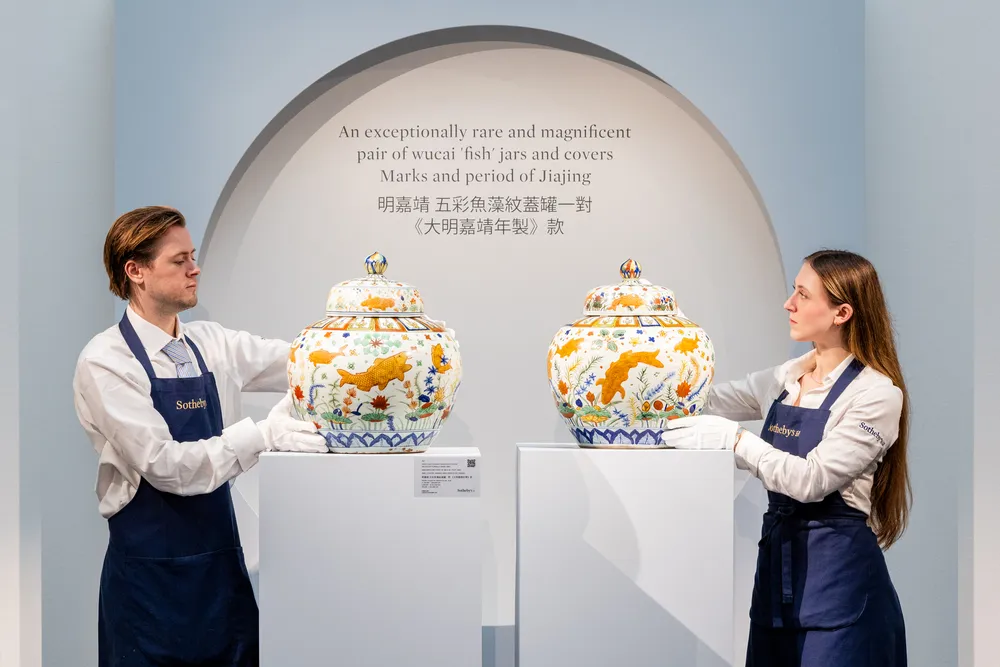
On Wednesday in London, Sotheby’s sold a pair of rare 16th-century Ming Dynasty Chinese jars decorated with orange fish for $12.5 million, blowing the house’s $1 million high estimate out of the water.
Ten collectors, most of whom competed by phone, were locked in a 20-minute bidding battle for the jars, which appeared in an auction of Chinese art. They eventually sold to a private Asian collector.
The result, which is the first ever auction appearance of a complete pair of such “fish jars” with covers, also marks the highest priced Chinese artwork sold at auction worldwide this year.
The porcelain jars were part of a German family collection for more than a century before going under the hammer today. Only one example of similar jars with covers is known to exist in a pair, and they’re held in the Musée Guimet in Paris. What’s more, only three other single jars in private hands are known to have kept their original covers.
“From the moment our catalogue was published, the response from collectors to this gem of a pair of ‘fish jars’ was swift and enthusiastic,” Henry Howard-Sneyd, Sotheby’s chairman, Asian Art, Europe, and Americas, told ARTnews. “Their reappearance from view after being hidden for a century provided an unmissable – and unique – opportunity, given the rarity factor. That excitement culminated in a tremendous buzz in the saleroom today, and it was thrill for me to preside over the auction and field bids from around the world.”
In a statement, Sotheby’s said the sold jars’ survival was “nothing short of miraculous.”
“They were removed to safety together with the family’s art collection during the Second World War, before the family home in Wiesbaden was destroyed,” the house said. “A photograph illustrated in a German art and interiors magazine published in 1926 shows the pair on display in the ‘Ladies room’; the pair can be seen again in the family living room in an article on the villa after it was rebuilt, dating from the early 1950s.”
Sotheby’s also explained that “fish jars” made during Jiajing Emperor’s reign (1522–66) in Imperial China were the result of a “major breakthrough in the possibilities of porcelain production, when the craftsmen in the Imperial kilns attained new heights.”
The “Chinese Art” sale totaled $19.6 million, exceeding its high estimate of $9.3 million, with over 55 percent of lots surpassing their high estimates.

